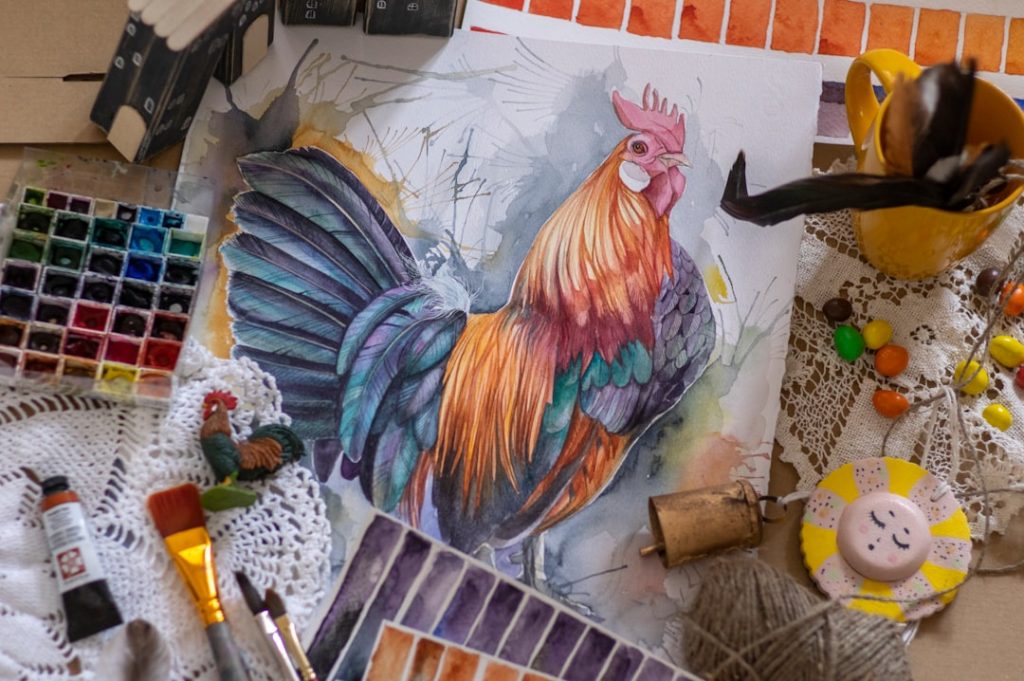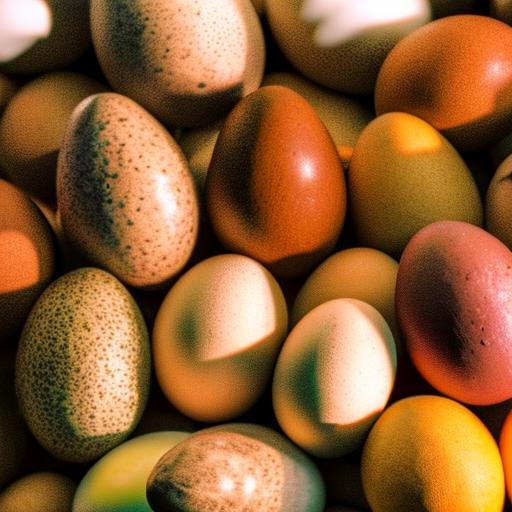Chickens have been domesticated for millennia, with archaeological evidence indicating their domestication occurred around 6000 BC in Southeast Asia. Throughout history, humans have selectively bred chickens for various purposes, including egg production, meat yield, and ornamental value. This process has resulted in the development of numerous chicken breeds with distinct traits and characteristics.
The ancient Romans and Greeks were among the earliest civilizations to recognize the potential of different chicken breeds and began intentionally breeding them for specific attributes. As global trade routes expanded, chickens were introduced to new regions, leading to the emergence of diverse breeds adapted to local conditions and preferences. The 19th and 20th centuries saw a more systematic approach to poultry breeding, with the establishment of breed standards and the formation of specialized poultry clubs and associations.
These organizations played a crucial role in preserving and promoting specific chicken breeds. Today, there are hundreds of recognized chicken breeds worldwide, each with its own unique genetic makeup, physical characteristics, and historical background.
Table of Contents
- 1 The Diversity of Chicken Breeds
- 2 Recognized Breeds of Chickens
- 3 Characteristics and Traits of Different Chicken Breeds
- 4 The Importance of Preserving Rare Chicken Breeds
- 5 Popular Chicken Breeds for Egg Production
- 6 Selecting the Right Chicken Breed for Your Needs
- 7 FAQs
- 7.1 What are the different breeds of chickens?
- 7.2 What are the differences between chicken breeds?
- 7.3 How do I choose the right breed of chicken for my needs?
- 7.4 Can different breeds of chickens live together?
- 7.5 Are there specific breeds of chickens that are better for egg production?
- 7.6 Are there specific breeds of chickens that are better for meat production?
Key Takeaways
- Chicken breeds have a long history, with some dating back hundreds of years and originating from different parts of the world.
- There is a wide diversity of chicken breeds, each with unique physical and behavioral traits.
- There are many recognized breeds of chickens, each with its own standard set by poultry associations.
- Different chicken breeds have distinct characteristics and traits, such as egg color, size, and temperament.
- Preserving rare chicken breeds is important for maintaining genetic diversity and ensuring the survival of unique breeds.
- Some popular chicken breeds for egg production include the Rhode Island Red, Leghorn, and Plymouth Rock.
- When selecting a chicken breed, it’s important to consider factors such as egg production, temperament, and climate suitability for your specific needs.
The Diversity of Chicken Breeds
Versatility in Purpose
Some breeds are known for their egg-laying abilities, while others are prized for their meat quality or ornamental appearance. Additionally, some breeds are well-suited for free-ranging, while others thrive in confinement.
Adaptability to Different Environments
The wide range of chicken breeds allows for a variety of options for poultry enthusiasts, whether they are interested in raising chickens for eggs, meat, or simply as pets. The diversity of chicken breeds also extends to their adaptability to different climates and environments. Some breeds are well-suited for cold climates, while others thrive in hot and humid conditions.
Global Distribution and Genetic Diversity
This adaptability has allowed chickens to be raised in virtually every corner of the globe, contributing to their status as one of the most widely distributed domesticated animals. Furthermore, the diversity of chicken breeds has led to the preservation of genetic diversity within the poultry population, which is crucial for maintaining healthy and resilient chicken populations.
Recognized Breeds of Chickens

There are hundreds of recognized chicken breeds around the world, each with its own unique characteristics and traits. Some of the most popular and well-known breeds include the Rhode Island Red, Leghorn, Plymouth Rock, and Wyandotte. These breeds are prized for their egg-laying abilities, meat quality, or dual-purpose capabilities.
Additionally, there are numerous ornamental breeds that are valued for their unique feather patterns and colors, such as the Silkie and Polish breeds. In addition to these well-known breeds, there are also many rare and heritage chicken breeds that are at risk of extinction. These breeds often have historical significance and unique traits that make them valuable for preserving genetic diversity within the poultry population.
Efforts to conserve rare chicken breeds are ongoing, with organizations dedicated to promoting and protecting these breeds from disappearing.
Characteristics and Traits of Different Chicken Breeds
Each chicken breed has its own set of characteristics and traits that make it unique. For example, the Rhode Island Red is known for its excellent egg-laying abilities and hardiness, making it a popular choice for backyard flocks. On the other hand, the Brahma breed is prized for its large size and gentle disposition, making it a favorite among poultry enthusiasts who raise chickens for meat.
In addition to physical traits, different chicken breeds also exhibit varying temperaments and behaviors. Some breeds are known for being more docile and friendly, while others may be more skittish or independent. Understanding the characteristics and traits of different chicken breeds is important for selecting the right breed for a specific purpose or environment.
The Importance of Preserving Rare Chicken Breeds
Preserving rare chicken breeds is crucial for maintaining genetic diversity within the poultry population. Genetic diversity is essential for ensuring the long-term health and resilience of chicken populations, as it allows for adaptation to changing environmental conditions and disease resistance. Additionally, rare chicken breeds often have unique traits that may be valuable for future breeding programs or research purposes.
Furthermore, preserving rare chicken breeds is important for maintaining cultural heritage and historical significance. Many rare breeds have been around for centuries and have played important roles in local economies and traditions. By conserving these breeds, we can ensure that their legacy continues to be appreciated and celebrated for generations to come.
Popular Chicken Breeds for Egg Production

High-Productivity Breeds
When it comes to egg production, there are several popular chicken breeds that are known for their prolific laying abilities. The Leghorn breed is perhaps one of the most famous egg-laying breeds, known for its high productivity and efficient feed conversion. Another popular choice for egg production is the Australorp breed, which is known for consistently laying large brown eggs.
Dual-Purpose Breeds
For those looking for a dual-purpose breed that excels in both egg production and meat quality, the Plymouth Rock breed is a popular choice. This breed is known for its friendly disposition and reliable egg-laying capabilities, making it a favorite among backyard flock owners.
Adaptable and Productive Breeds
Additionally, the Sussex breed is valued for its excellent egg-laying abilities and adaptability to various climates.
Selecting the Right Chicken Breed for Your Needs
When selecting a chicken breed for your specific needs, it’s important to consider factors such as climate, space availability, intended purpose (eggs, meat, or ornamental), and personal preferences. For example, if you live in a cold climate, you may want to choose a breed that is known for its cold hardiness, such as the Orpington or Wyandotte. On the other hand, if you have limited space for your flock, you may want to consider smaller breeds like the Bantam or Silkie.
If your primary goal is egg production, then choosing a breed known for its prolific laying abilities, such as the Leghorn or Australorp, would be ideal. However, if you’re interested in raising chickens for meat, then selecting a dual-purpose breed like the Plymouth Rock or Sussex would be a better fit. Additionally, if you’re looking to add some visual interest to your flock, ornamental breeds like the Polish or Silkie would be great choices.
In conclusion, the world of chicken breeds is incredibly diverse and fascinating, with each breed offering its own unique set of characteristics and traits. Whether you’re interested in raising chickens for eggs, meat, or simply as pets, there’s a breed out there that’s perfect for your needs. By understanding the history and diversity of chicken breeds and the importance of preserving rare breeds, you can make informed decisions when selecting the right breed for your flock.
If you’re interested in learning more about different breeds of chickens, you might also want to check out this article on mating season for turkeys. It provides valuable information on the breeding and mating habits of turkeys, which can be helpful for poultry enthusiasts looking to expand their knowledge beyond just chickens.
FAQs
What are the different breeds of chickens?
There are hundreds of different breeds of chickens, each with its own unique characteristics and traits. Some popular breeds include the Rhode Island Red, Leghorn, Plymouth Rock, and Sussex.
What are the differences between chicken breeds?
Chicken breeds can vary in size, color, egg production, temperament, and purpose (meat or egg production). Some breeds are known for their docile nature, while others are more active and flighty. Additionally, some breeds are better suited for cold climates, while others thrive in warmer environments.
How do I choose the right breed of chicken for my needs?
When choosing a breed of chicken, consider factors such as your climate, available space, desired egg or meat production, and the temperament of the breed. Researching different breeds and their specific characteristics can help you make an informed decision.
Can different breeds of chickens live together?
Yes, different breeds of chickens can live together in the same flock. However, it’s important to consider the compatibility of the breeds in terms of size, temperament, and pecking order dynamics. Introducing new chickens to an existing flock should be done gradually to minimize stress and aggression.
Are there specific breeds of chickens that are better for egg production?
Yes, some breeds are known for their high egg production, such as the Leghorn, Rhode Island Red, and Sussex. These breeds are popular choices for backyard egg production due to their consistent laying abilities.
Are there specific breeds of chickens that are better for meat production?
Yes, there are breeds specifically bred for meat production, such as the Cornish Cross and the Plymouth Rock. These breeds are known for their fast growth and high meat yield, making them popular choices for meat production.
Meet Walter, the feathered-friend fanatic of Florida! Nestled in the sunshine state, Walter struts through life with his feathered companions, clucking his way to happiness. With a coop that’s fancier than a five-star hotel, he’s the Don Juan of the chicken world. When he’s not teaching his hens to do the cha-cha, you’ll find him in a heated debate with his prized rooster, Sir Clucks-a-Lot. Walter’s poultry passion is no yolk; he’s the sunny-side-up guy you never knew you needed in your flock of friends!








